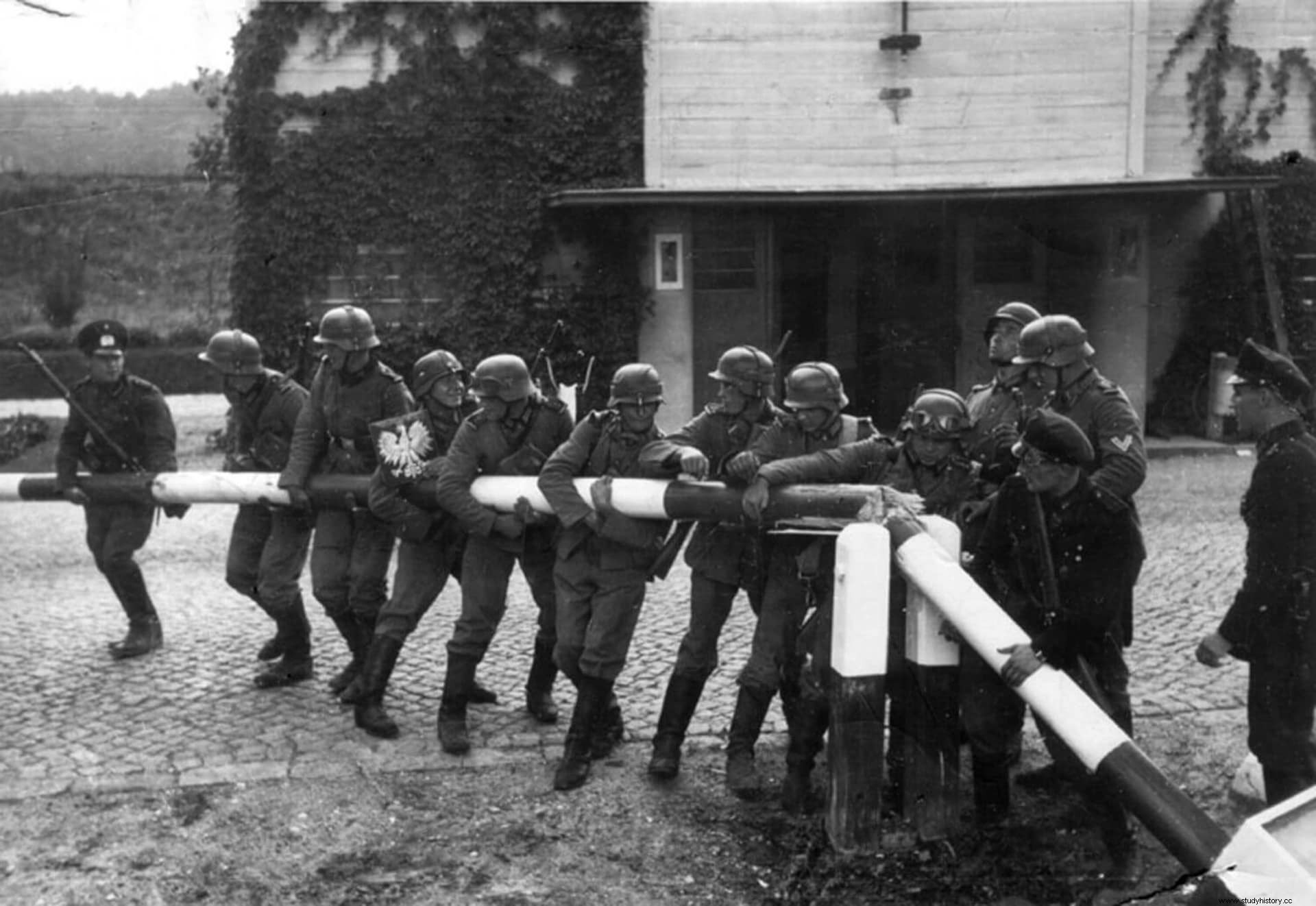
1939-2019
80 years since the outbreak of the Second World War
On September 1, 1939Germany invaded Poland, causing the outbreak of World War II , of which this Sunday marks the 80th anniversary. To help you get to know this crucial event, from today, Friday, August 30 to Sunday, September 1, we offer our entire World War II catalog with free shipping by shipping method Correo Paq 72 (Correos courier, delivery in 48-72 hours on working days) in orders in our online store from any amount, no minimum order .
*Offer valid for the Peninsula and the Balearic Islands. For the Canary Islands and the rest of the world, the corresponding shipping costs will apply.
«As long as there are sovereign nations possessing great power, war is inevitable»
Albert Einstein
Awakening Ferro Specials XX:Panzer vol. 3 (1942). From the Langrohr to the Tiger
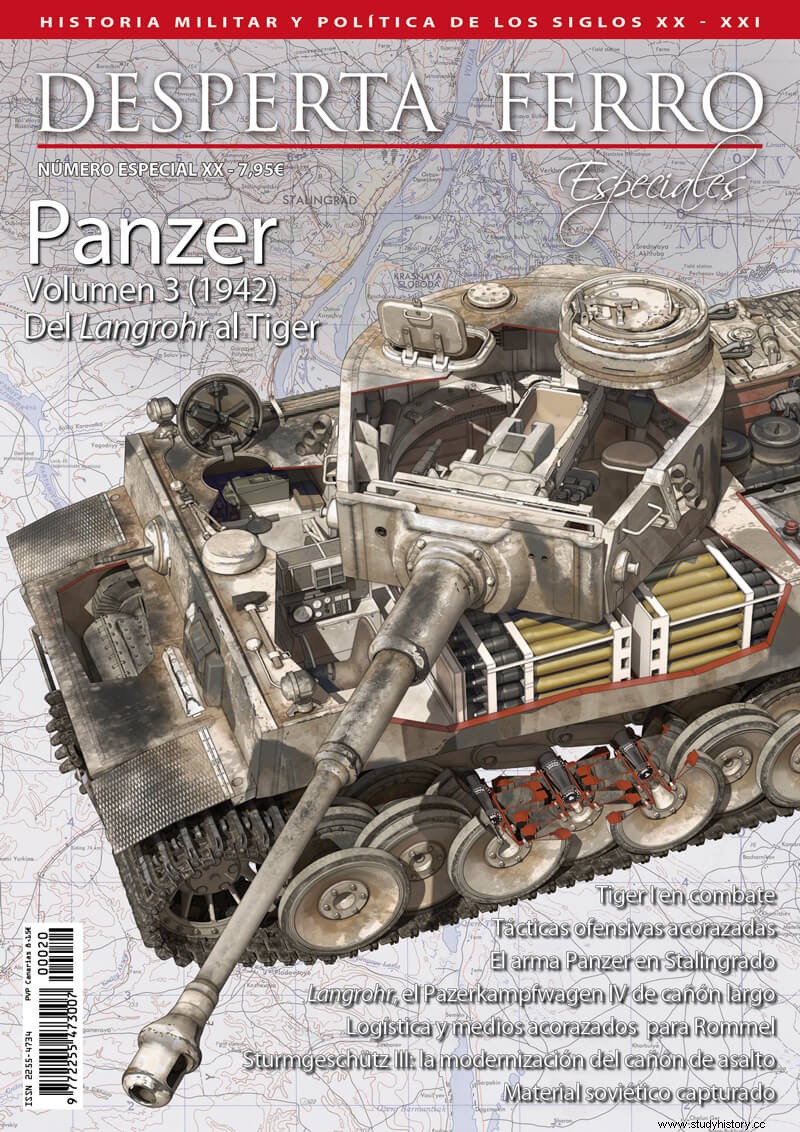
In 1942, the German Panzer gun was facing the enemy that he had not been able to defeat the previous year, but this time he knew him better and the challenge posed by Soviet main battle tanks, such as the T-34 or the KV, superior to their Wehrmacht opponents, was about to meet. response. On the one hand, with the appearance of the Langrohr , name given to the deadly new 7.5 cm KwK 40 (L/43) long-barreled cannon fitted to the Panzer IV and Sturmgeschütz. On the other hand, a monster was about to enter the battlefield, the Tiger I, with its powerful 88mm cannon and insurmountable armor, whose claws would be felt first against Leningrad, and then throughout the entire Union Soviet as in Tunisia.
To buyAwake Ferro Contemporary #35:The Battle of Britain
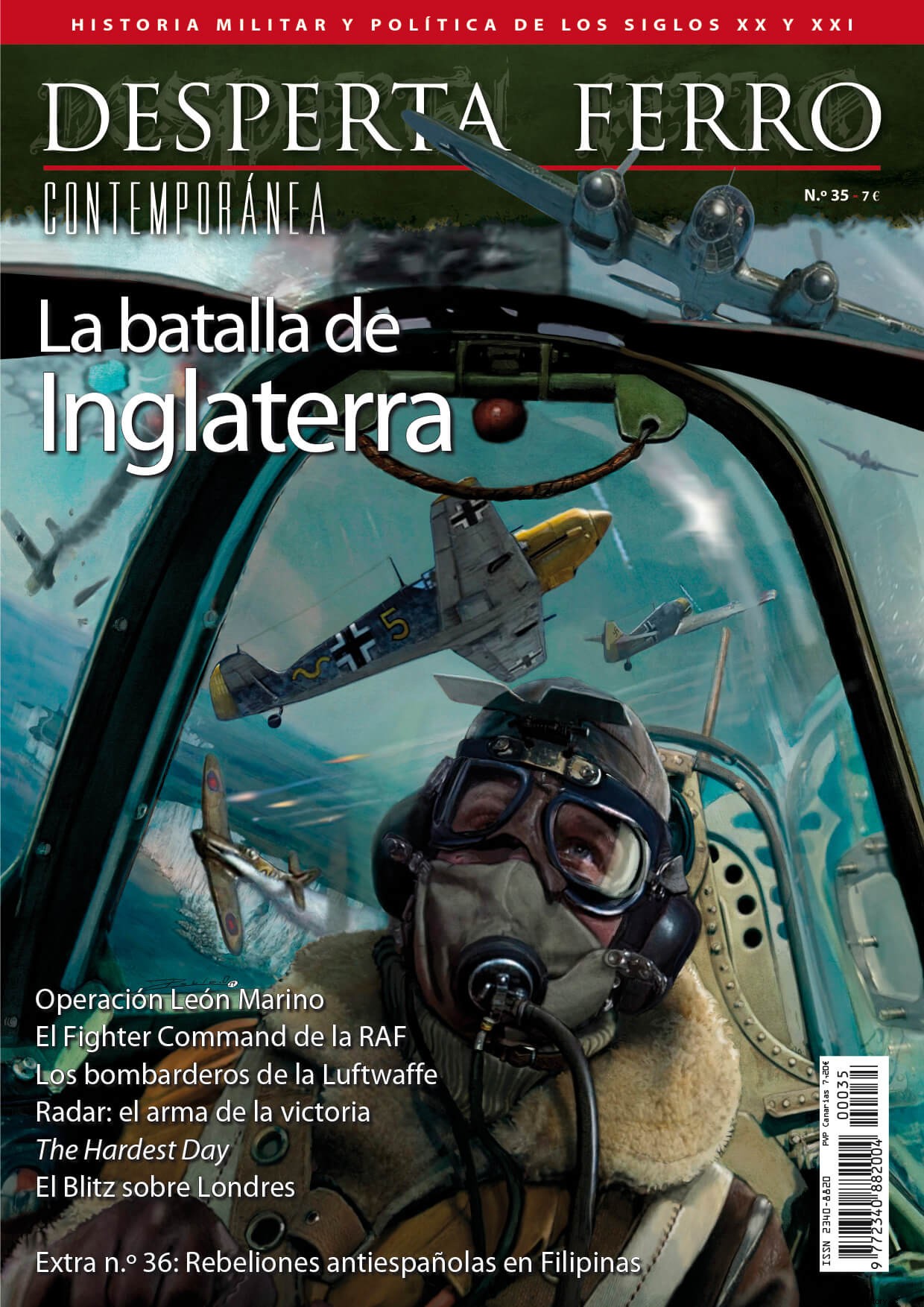
“What General Weygand called the Battle of France, it's over. I think the Battle of Britain is about to begin." On June 18, 1940, Churchill repeated on the radio the speech he had given in the House of Commons, in which he named one of the most notable actions of World War II, the first purely aerial battle of all. the times. That was the story of the “few” to whom “so many” owed “so much”, the fight waged by a handful of aviators in the skies of Great Britain against the power of the Luftwaffe; but also that of the hard-working German pilots, who faced the titanic task of subjugating a country from the air.
To buyNormandy 1944 Illustrated Notebook
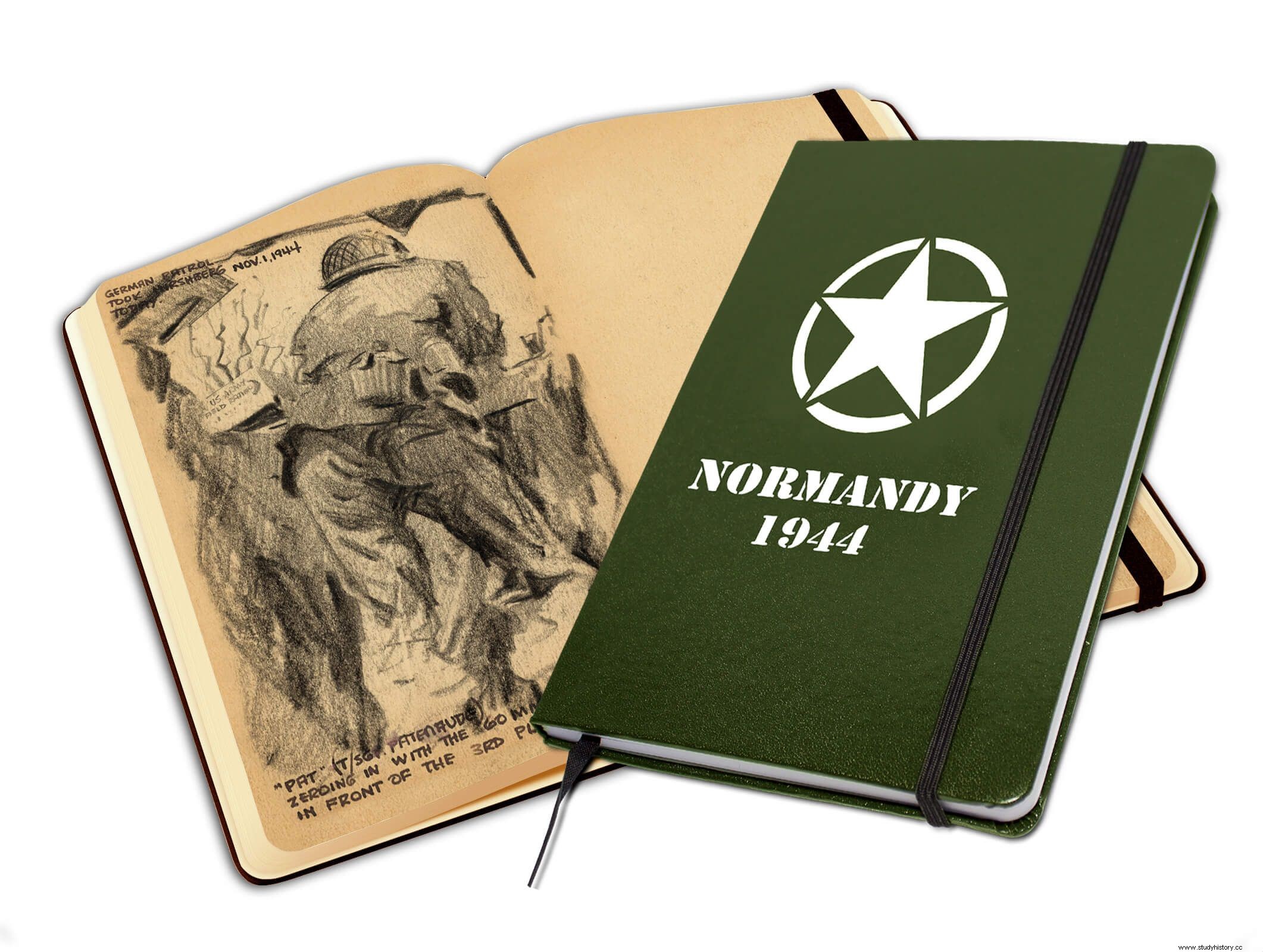
The illustrated notebook Normandy 1944 collects more than seventy drawings made by Victor Lundy during his service in the 26th Infantry Division of the United States Army, from his training at Fort Jackson in May 1944 until he was wounded in November of that same year on the Western Front. Lundy always carried with him a small spiral notebook, about 7.5 x 13 cm, suitable to be kept in any pocket of his jacket, and thus take advantage of any pause to, pencil in hand, capture what surrounded him with a tremendously stylish style. naturalist.
To buyAwake Ferro Contemporary #33:Normandy (I). The airborne assault
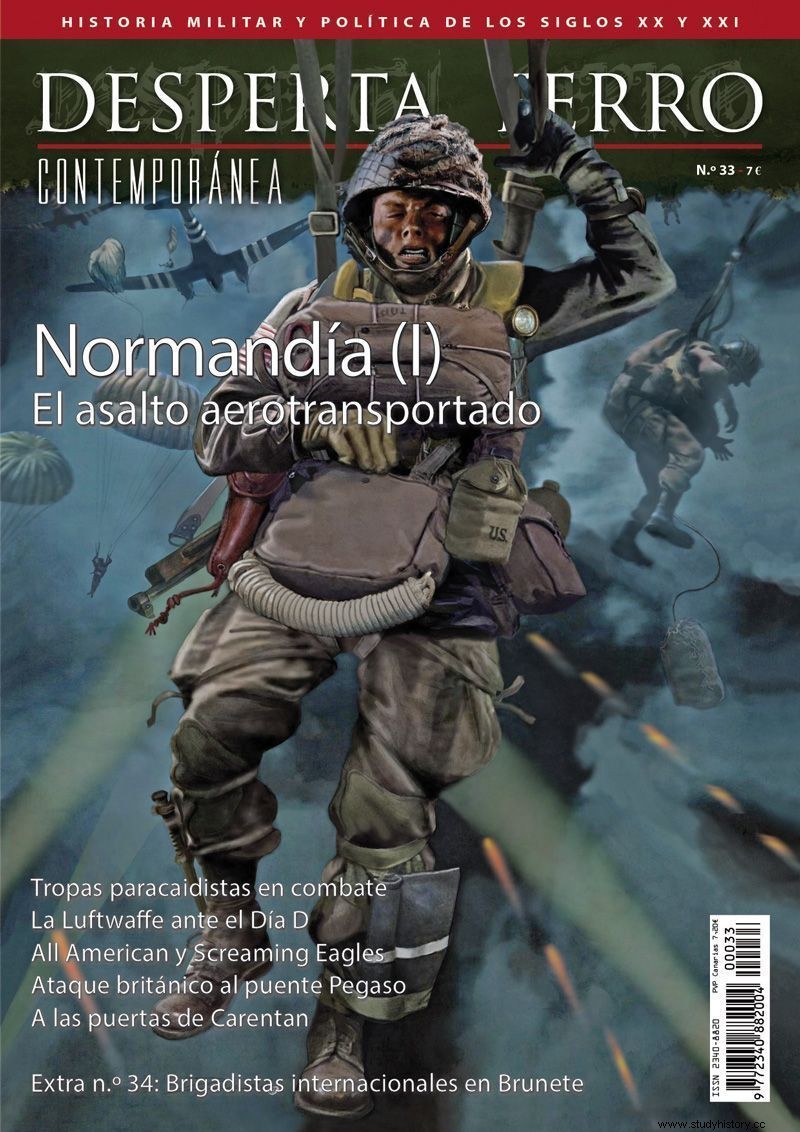
The first issue of the series that Deserta Ferro Contemporánea will be devoted to the Normandy Landings will feature the Allied airborne assault. Normally, it is believed that the maritime landing was the first military contact that morning between the Allies and the Germans, however, the anti-aircraft artillery had already begun to roar shortly after last midnight trying to contain an aerial army as numerous as the fleet that would come later. Thousands of paratroopers jumped on the German batteries hoping to ensure the landing of their comrades.
To buyThe road to victory. The Second World War in the Mediterranean
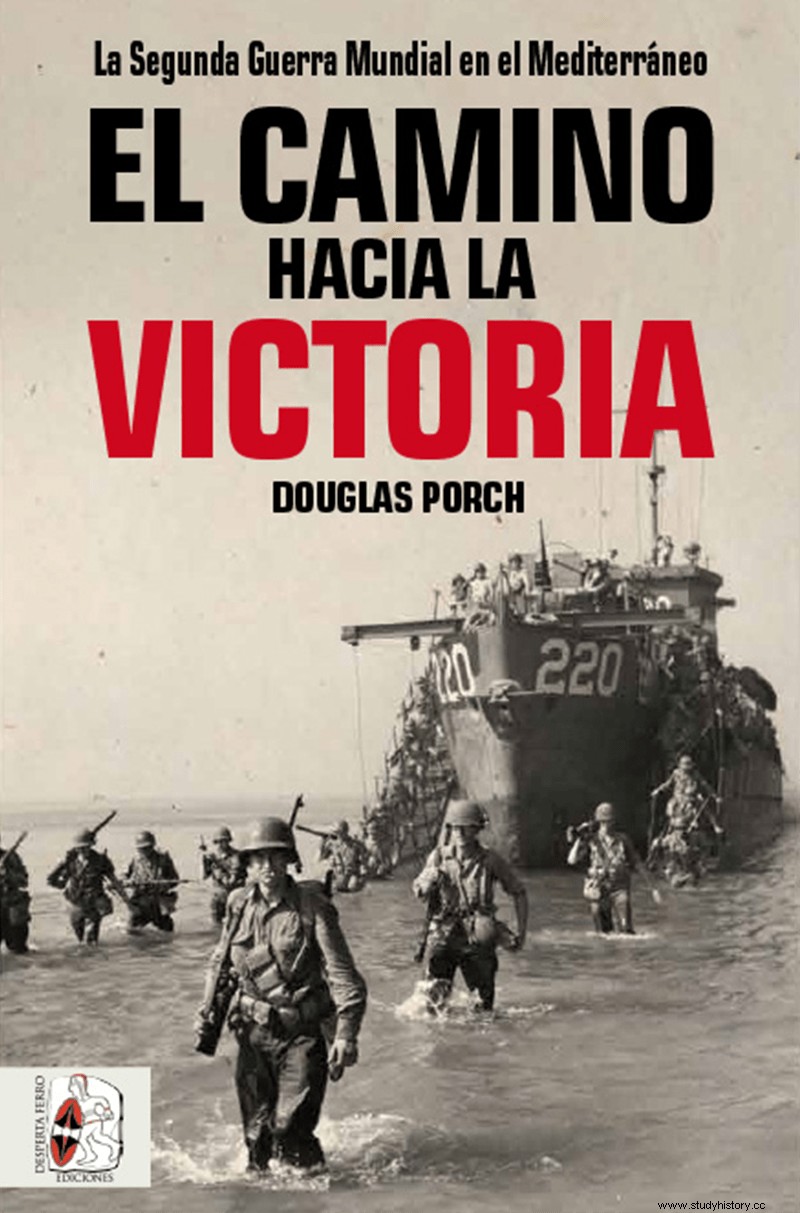
June 22, 1940, signed After the armistice between France and Germany, the United Kingdom found itself alone at war with the Axis. Churchill's cabinet immediately understood that it was necessary to give a sense of progress towards the end so that the morale of the population would not drop, and for this the enemy had to be defeated on the ground, something that could only happen on a stage:the undervalued theater of World War II operations in the Mediterranean. Douglas Porch, author of this volume and one of today's most acute military historians, masterfully argues and argues the importance of this war scenario and its role in the beginning of the Axis wear and in the decisive US participation in the German defeat.
To buyArmageddon in Stalingrad. Tetralogy on Stalingrad volume II
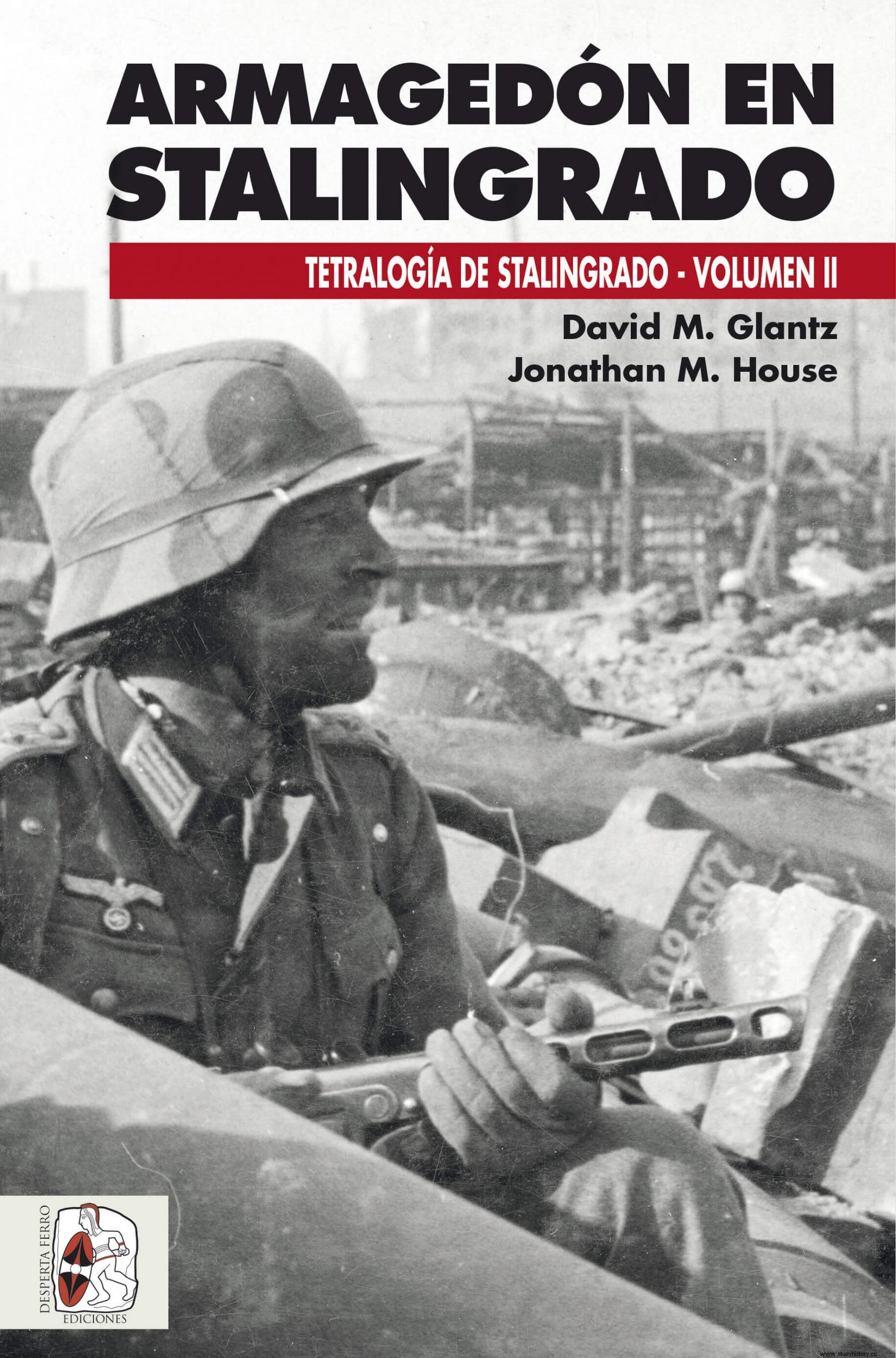
Armageddon at Stalingrad, second volume of the Tetralogy of Stalingrad by David Glantz and Jonathan House, takes us back to the crucial months of September, October and November 1942, witnesses of the drama of a dying city punished on all fronts, by land and by air. For the elaboration of his story, Glantz and House have scoured previously unstudied sources, including NKVD archives and reports from the Soviet 62nd Army and the German Sixth Army, to provide unprecedented details and new interpretations of this doomsday campaign.
To buyThe lost oasis. Almásy, Zerzura and the desert war

Saul Kelly tells us about the ruthless rivalry masked behind the expeditions of the Zerzura Club:in a context where Mussolini was counting on making Egypt the centerpiece of a new Roman Empire, the British, for whom the Suez Canal was strategic, were fully prepared to prevent it. Soon the lost army of the Persian king Cambyses would see the dream of him disturbed by the chains of the Axis armor, determined to reach Alexandria, and the members of the Club would take opposing paths. While Bagnold founded the Long Range Desert Group to spy on and disrupt the advance of Rommel's Afrikakorps, Count László Almásy – a fascinating Hungarian aristocrat and adventurer, the real "English patient" – was attempting to fill Cairo with Nazi agents.
To buyAwakening Ferro Specials (XVI) Panzer volume 2 (1941). From Africa to Barbarossa
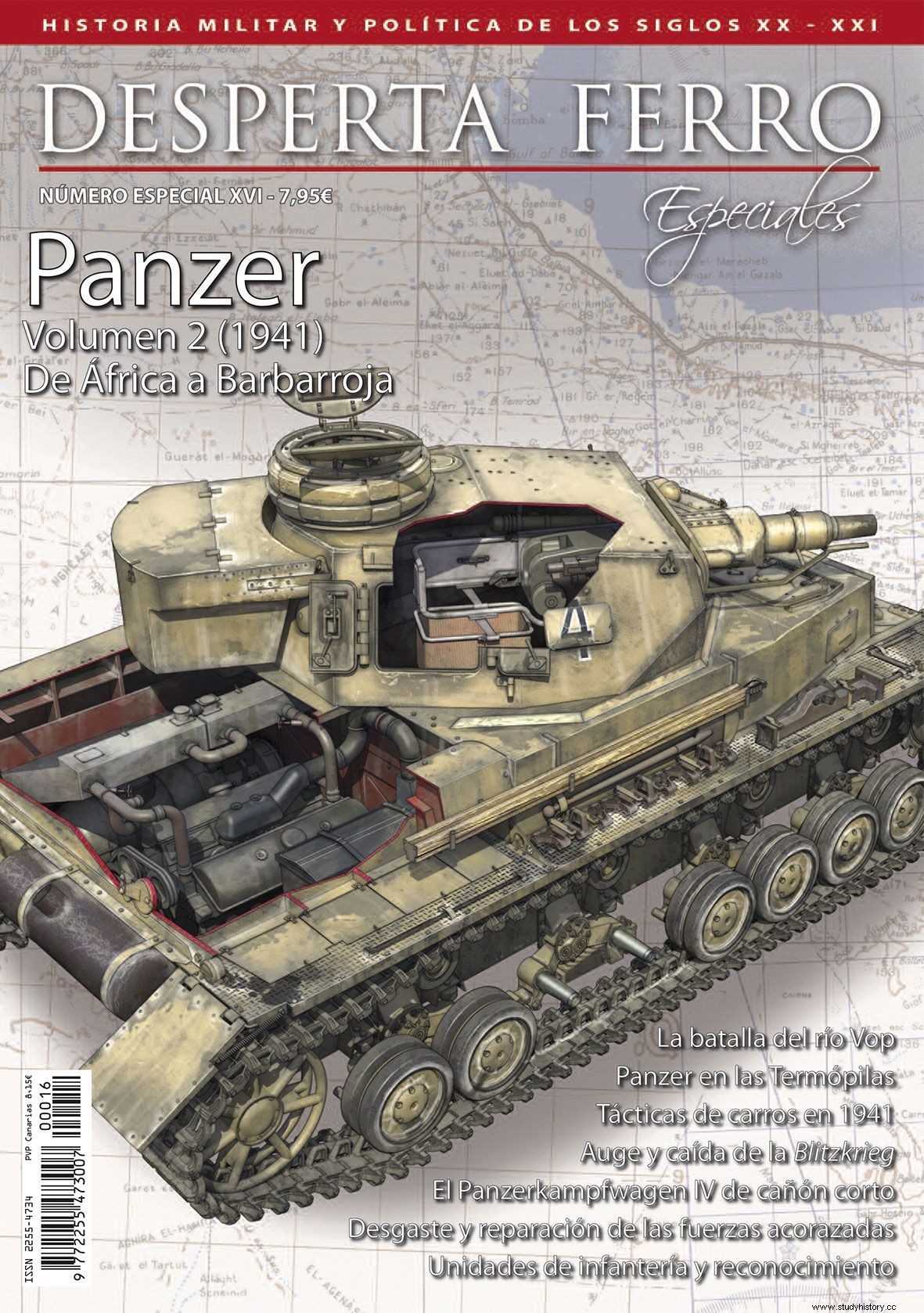
We go deep into 1941, when the Panzer troops abandoned the most developed Europe to travel to distant and difficult war scenes, which posed extraordinary challenges. At the beginning of February the Afrika Korps began to disembark in Tripoli, in April, the Balkan campaign began, in which the Panzers had to enter the uninhabited mountains that extended around Mount Olympus. But the crowning adventure was Operation Barbarossa, the invasion of the Soviet Union, a campaign in which they had to face, for the first time, superior tanks in many ways. However, and despite all these difficulties, throughout this year the German Panzer weapon once again demonstrated its professional versatility and the supremacy of its battle tanks and its crew.
To buyBasque fighters in World War II
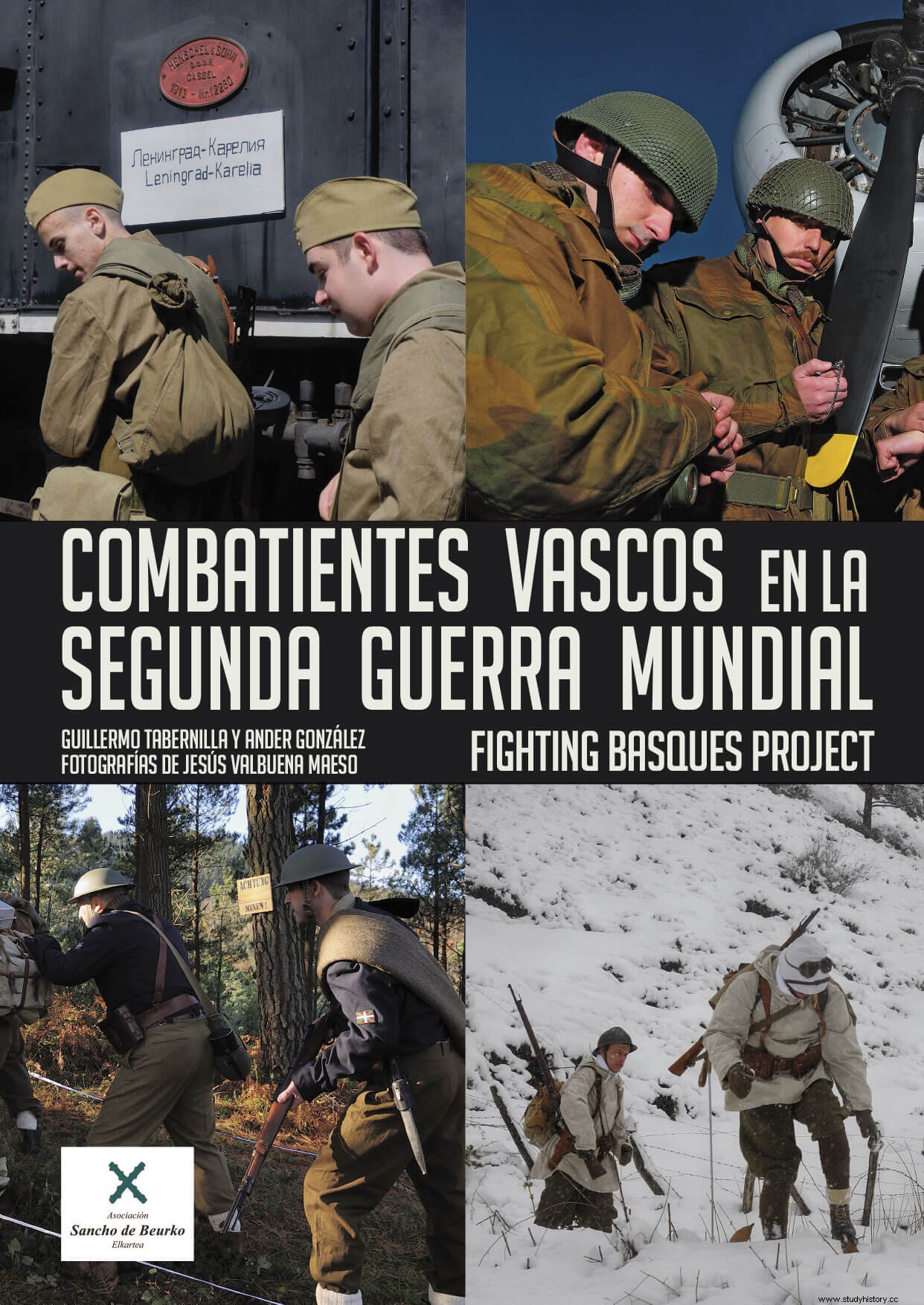
From the Libyan desert to the Pacific beaches , and from the snows of the Arctic to the skies of Europe, the Basques fought in all the theaters of the Second World War, mainly with France, the United States and the USSR. CBasque fighters in the Second World War , which is published in collaboration with Fighting Basques, a memory project of the Sancho de Beurko Association, aims to publicize the participation of these soldiers in the allied armies in the greatest conflict that history has ever witnessed, modest but not less representative for a small town that had just suffered a fierce civil war, with its terrible consequences of death and misery.
To buyAwake Ferro Contemporary No. 28:Budapest 1944-1945
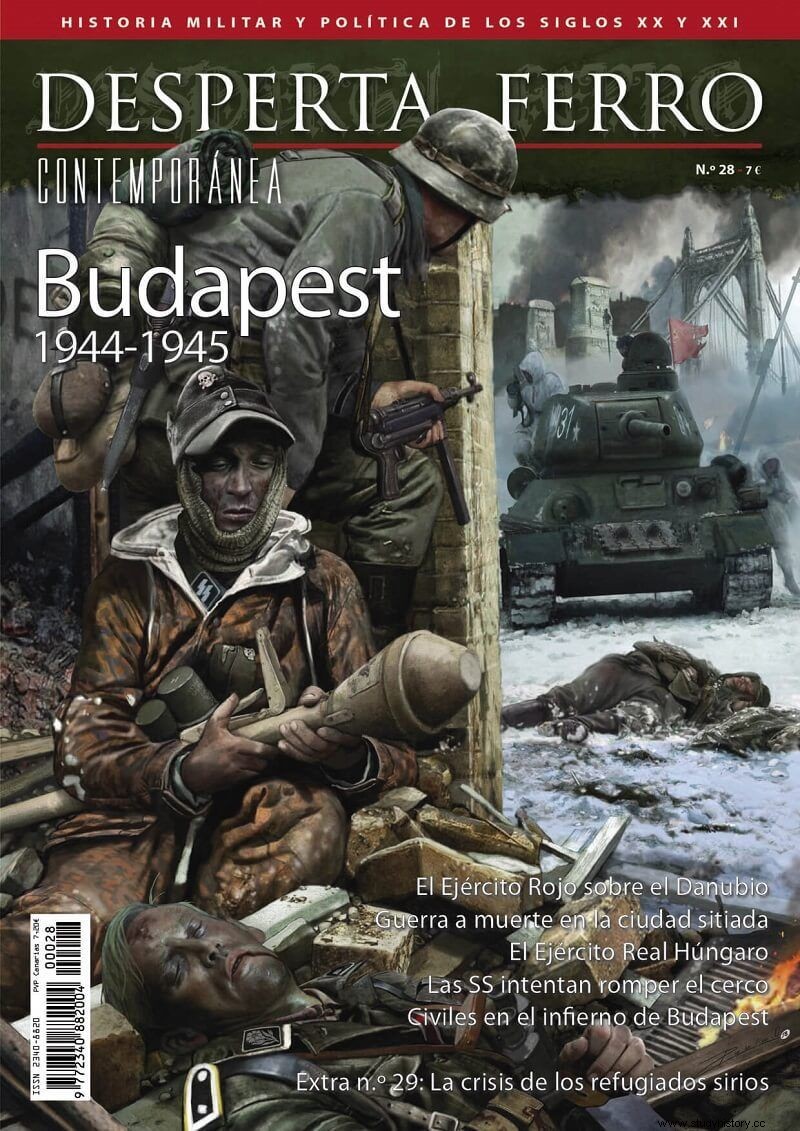
Between Stalingrad and Berlin, Budapest can well be considered one one of the most spectacular sieges of World War II. The city, nestled on both banks of the Danube and far from the axis of natural progression between Moscow and the capital of Nazi Germany, was the scene, during the winter of 1944-1945, of a battle that derives part of its fame from the fact that that a disproportionate number of SS troops fought in it. But we must not forget that troops from the Wehrmacht, the Hungarian Army and the Romanian Army, who had recently changed sides to join the Soviets, also fought in the Danubian capital. The tragedy of Budapest was also that of its civilians, especially Jews, who had to face the incessant persecution of those who wanted to annihilate them.
To buyIsland of Hope

The island of hope boards, with a pulse of novel, a story rarely told, that of how from England the exiles of half of Europe – Poles, Czechs, Danes, Norwegians, Dutch, Belgians, French… – tried to shake off the Nazi yoke of their countries. Lynne Olson, who for former US Secretary of State Madeleine Albright – herself a Czech refugee in London during her childhood – is "the best chronicler of World War II politics and diplomacy of our time", threads Drawing from the experiences of a disparate cast of characters with a vibrant narrative. A story that combines epic and humanity, about a few decisive days in which from The Island of Hope the freedom of Europe was at stake.
To buyThe battle for Leningrad. 900 days besieged by the Wehrmacht
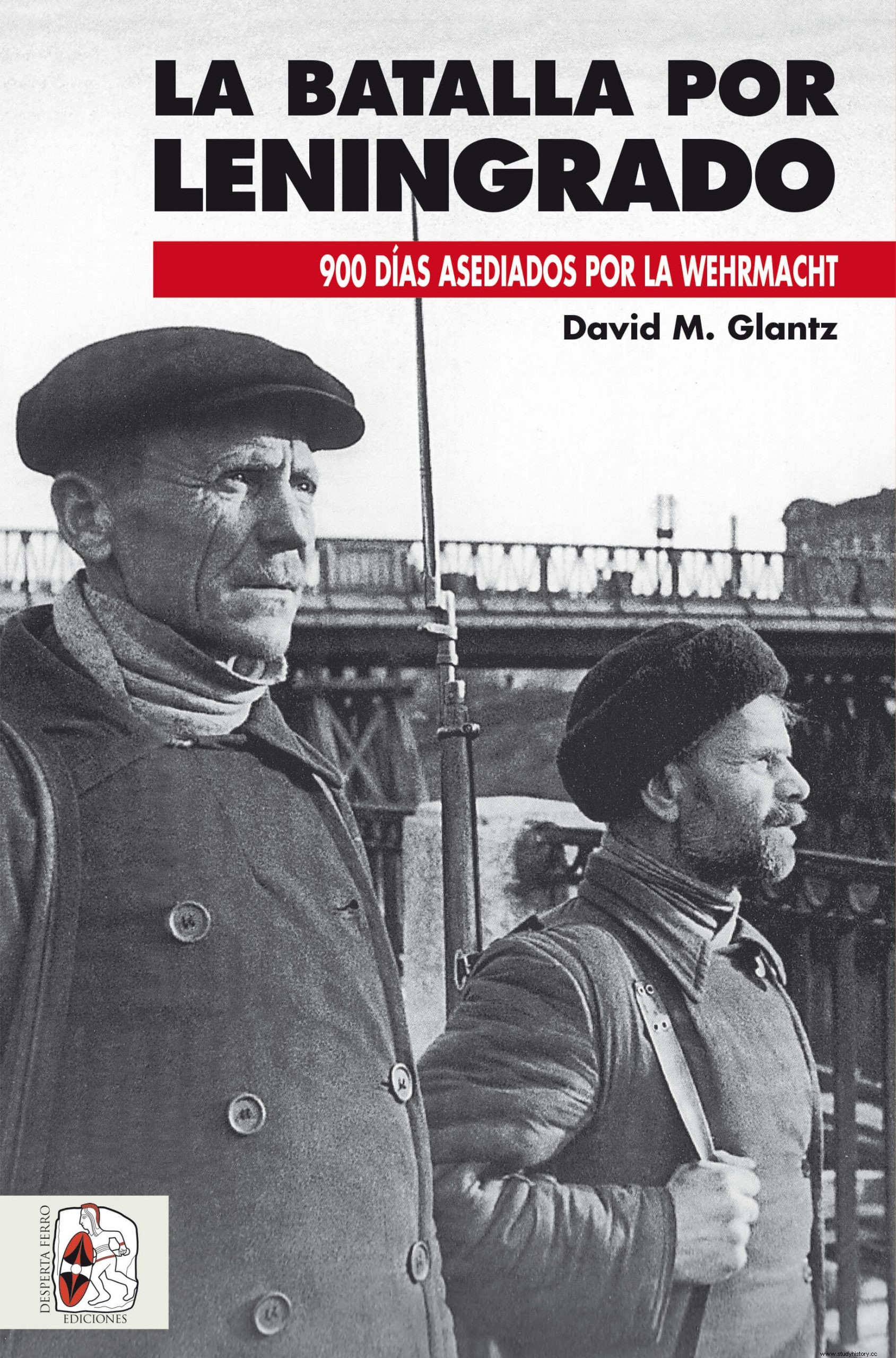
During World War II, Leningrad had the dubious honor of having suffered what was undoubtedly the most important siege in the history of mankind, especially if we add the number of civilians in the city when the siege was closed -2,280,000, to which we must add dozens of thousands of soldiers and sailors engaged in the defense of the front–; the very few limits to which food rations fell; the atrocious weather conditions, which reached -40ºC; and the epic of the intense actions that allowed the city to survive. David M. Glantz recounts in great detail and mastery those 900-day siege to which the ancient city of the czars was subjected.
To buyAwake Ferro Contemporary #25:The Siege of Tobruk, 1941
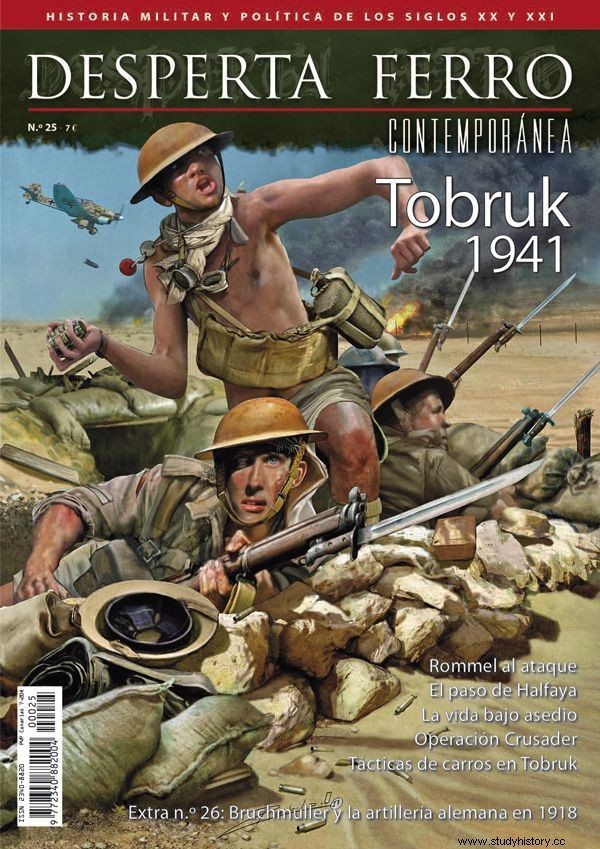
The siege of Tobruk in 1941 can be understood from a double point of view. On the one hand, it was the Germans who tried to take the fortress in April, and who later besieged it, bombing it and trying to cut off its maritime communications while preparing the final assault. On the other hand, the British were the besiegers, as their lines of communication to Egypt were much more secure, and Tobruk was never completely out of supply, while Rommel's Afrika Korps, threatened both from the front and from the rear and attacked on several occasions , was finally forced to return to its starting point.
To buyAt the gates of Stalingrad. Stalingrad tetralogy – volume I
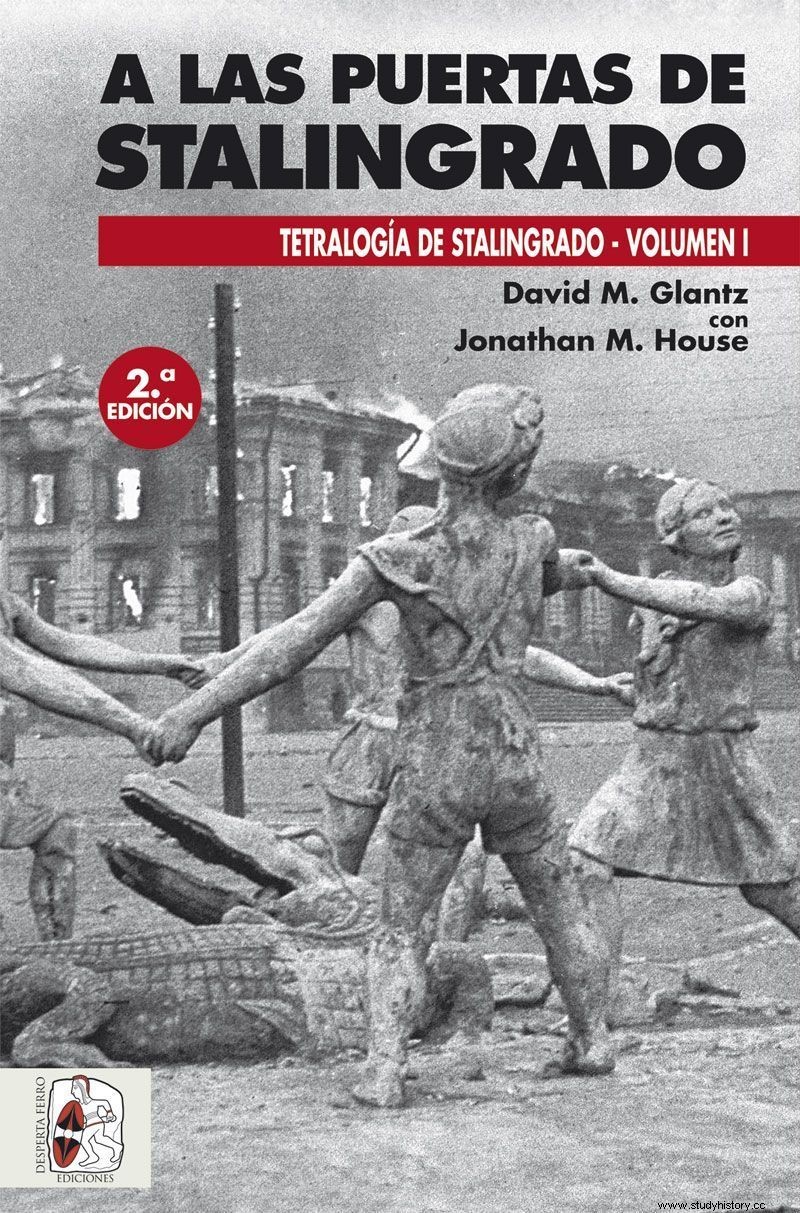
The confrontation between German and Soviet forces in Stalingrad it was a titanic clash, on an unprecedented scale, a turning point in World War II and an enduring symbol of its devastation, to which much work has been devoted. David Glantz combines the daily official reports from both sides to produce a majestic work of painstaking detail and new interpretations. A revealing chronicle, beginning a tetralogy – whose following volumes will describe the fierce battle for the city and the successful Soviet counteroffensive – that drastically revises and expands our understanding of the Battle of Stalingrad, one of the most decisive military campaigns in human history. .
To buyAwaken Ferro Specials (XII) Panzer Volume 1. The Triumph of the Blitzkrieg 1939-1940
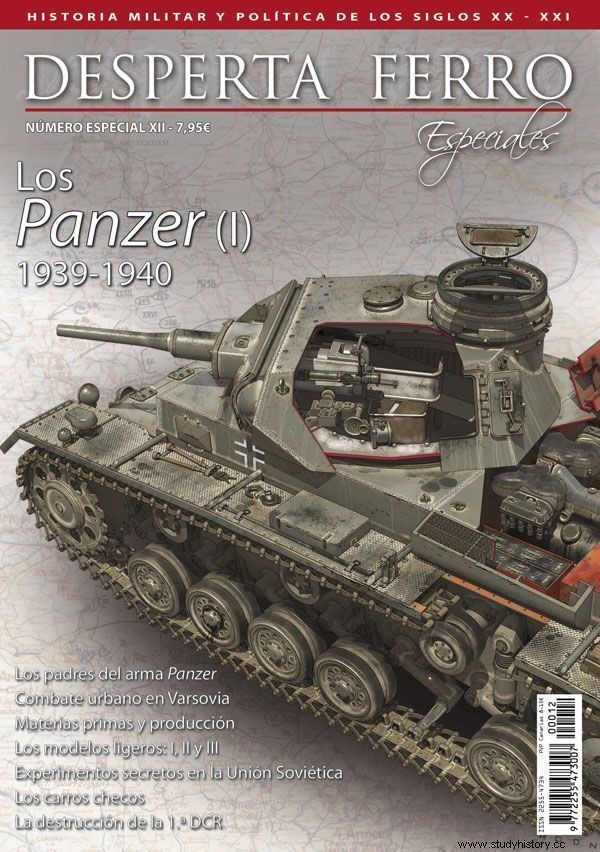
This first installment is dedicated to the initial period of the war, 1939-1940, when, while the rest of the continent speculated on how to use the innovative concept of battle tanks and armored warfare, Germany, spurred on by the sting of defeat in the First World War and leaning on a group of fantastic thinkers, developed the Panzer division, a fundamental piece in the concept of Blitzkrieg or "blitzkrieg" that would crush all of Germany's rivals on the continent.
To buyAwake Ferro Contemporary #22:Dunkirk 1940
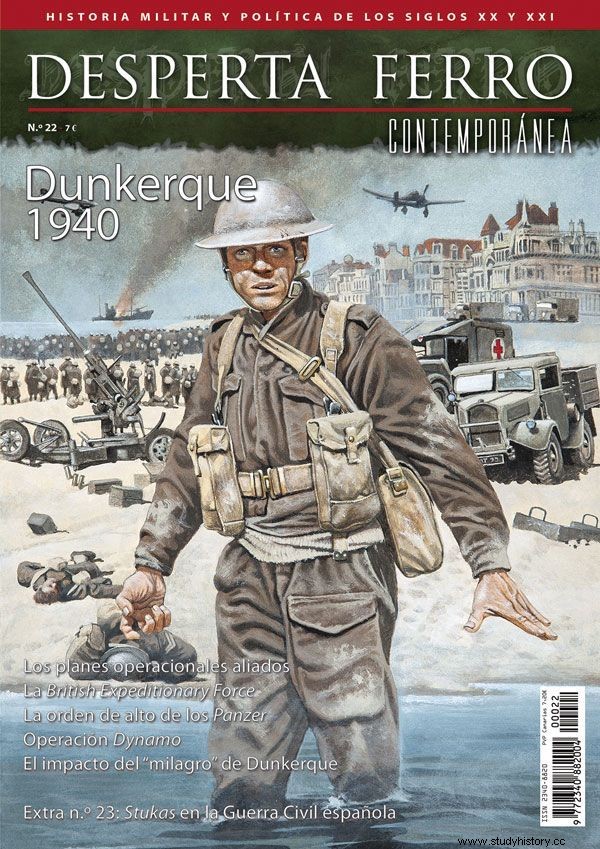
The events of Dunkirk have been a coin with two faces, since there are two different stories:the "battle" of Dunkirk, advocated by Gallic historians – thanks to the heroic defense of the patriotic soldiers, the British contingent was able to withdraw, and if it was saved almost intact it was thanks to the Gallic blood spilled in the front – and the “retreat” from Dunkirk, Operation Dynamo, as described by British authors – a beleaguered expeditionary force that, faced with the decision-making incapacity of its French allies, was forced to choose between retreating back home and survive or be annihilated in the midst of defeat. The reality is undoubtedly a mixture of both aspects, the story of a criminal lack of coordination that caused a collapse of morale and, finally, defeat.
To buyClash of the Titans – 2nd Edition
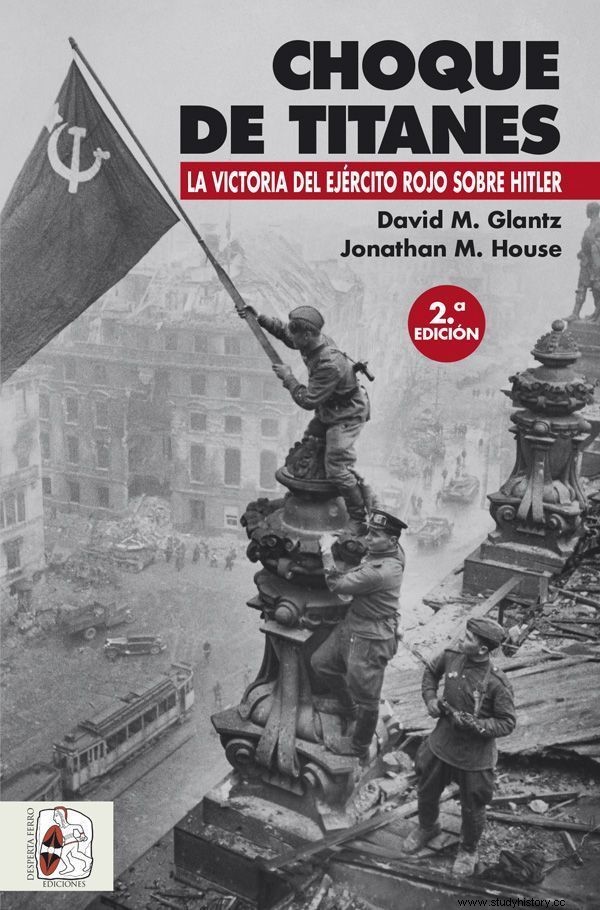
November 1941, the Wehrmacht Blitzkrieg had pushed the Red Army to the gates of Moscow. Yet less than four years later, the hammer and sickle hung over the ruins of the Reichstag. An eloquent symbol of the end of a clash of titans, a struggle for life or death that led to the triumph of the Soviet Union. Told in extraordinarily snappy prose, in this revised and expanded edition of the original When Titans Clashed , published in 1995, David M. Glantz, one of the leading authorities on the study of the Soviet Army, and Jonathan M. House, present a largely novel interpretation of the Eastern Front, what was known in the USSR as the "Great Patriotic War", by approaching it from the Soviet perspective, so often biased or ignored.
To buyAwake Ferro Contemporary #19:The Battle of the Bulge (II):The Allied Counterattack
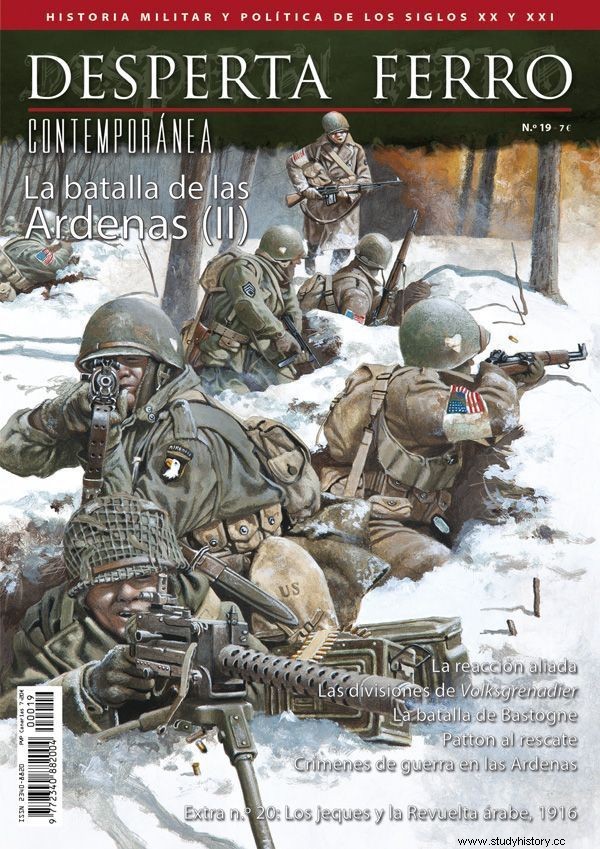
Unlike what seems to have been left in the In the collective imagination, the Battle of the Bulge did not end when the great German offensive was contained, but the fighting continued. The defeat of the Ardennes was that of the last major German offensive in the West. But, in that cold month of January, did the Germans know that they had been defeated? Was Hitler aware of this? It is striking that on January 16 the dictator left the Adlerhorst ("eagle's nest") to bury himself permanently in the Führerbunker in Berlin. So why continue to fight in the Battle of the Bulge? They may have continued to know that as long as they were fighting in that small part of Belgium, the Allies would not launch offensives elsewhere along the front that would drive them deep into the heart of Germany.
To buyAwake Ferro Contemporary #17:The Second Battle of Kharkov 1942
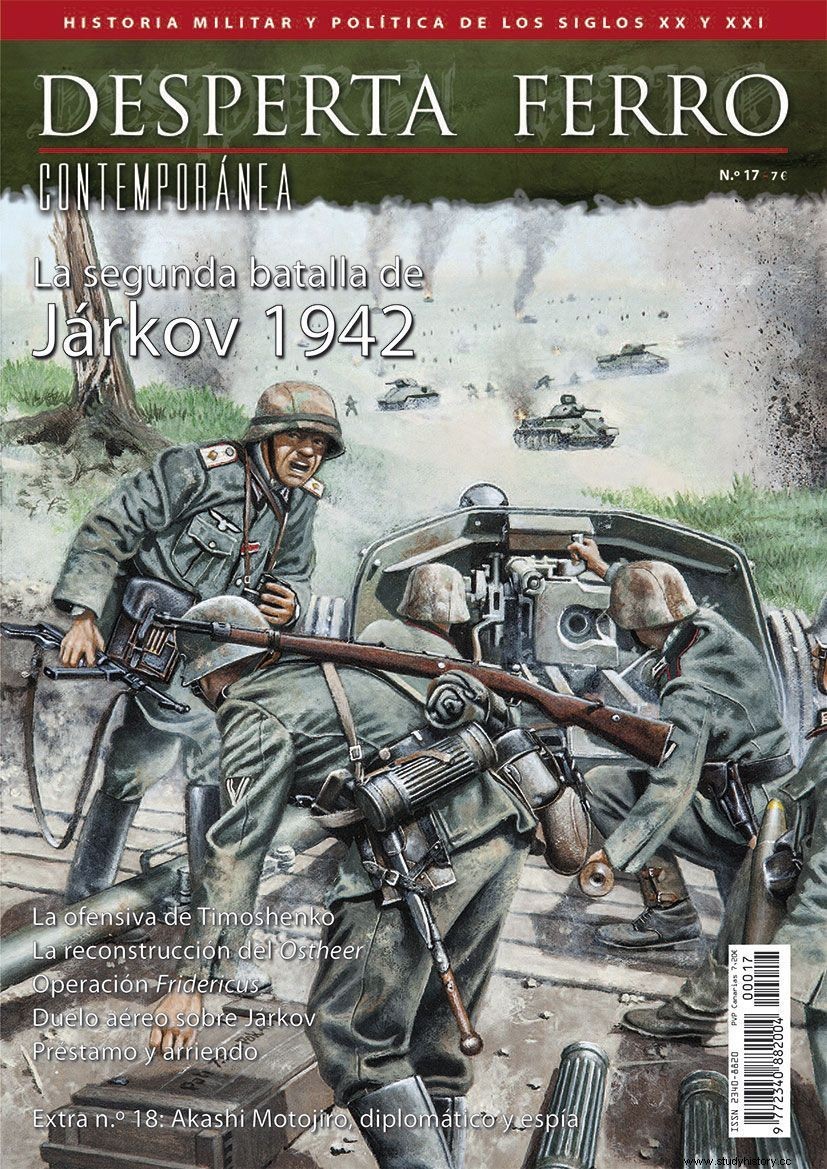
During the campaigns on the Eastern front of the Second World War, the Kharkov region witnessed four battles. We will have as the protagonist of this issue the second battle of Kharkov in 1942, when the Soviets became the target of a series of furious counterattacks. In May and June 1942 two things of enormous importance happened:first, the Luftwaffe ceased to be the owner and mistress of the entire air space; and second, that after the success of Operation Fridericus , the Red Army no longer allowed itself to be trapped in large pockets, something the Germans were unable to understand.
To buyAwake Ferro Contemporary #15:The Battle of the Bulge (I)
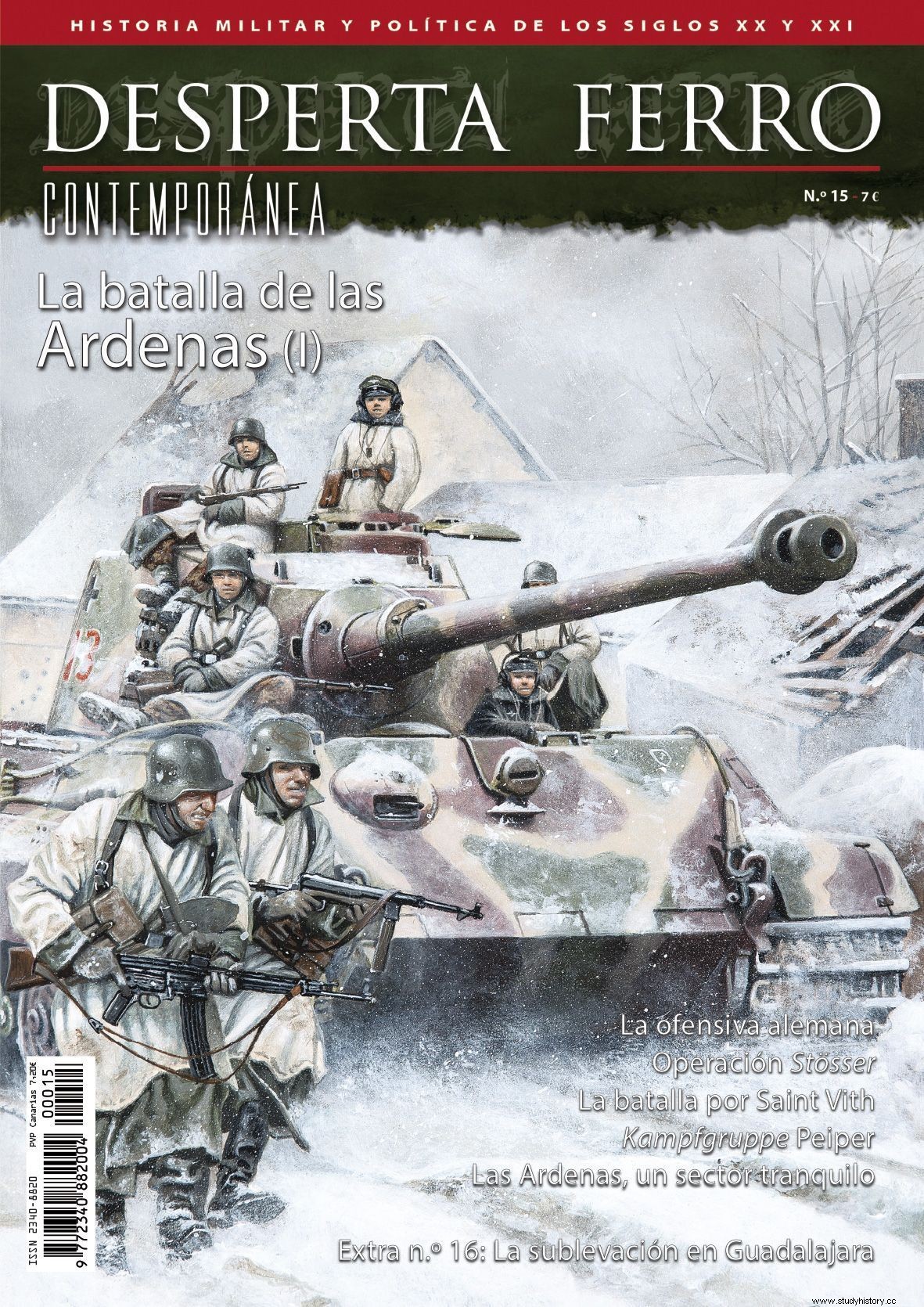
The Battle of the Bulge, the last big gamble of Hitler on the Western Front. After their extraordinary military victories in the second half of 1944, the Allies believed that the war was won and the German offensive in the Battle of the Bulge caught them by surprise. General Bradley, in command of the US troops, did not know how to react, unlike Eisenhower or George Patton. The tensions this would generate and ultimately resolve was the closest Hitler came to splitting the Western Allies. In this first issue dedicated to the Battle of the Bulge we will analyze in detail the German offensive, while in the second part we will see the Allied counterattack.
To buyAwake Ferro Contemporary #7:Stalingrad (II):Not One Step Back on the Volga!
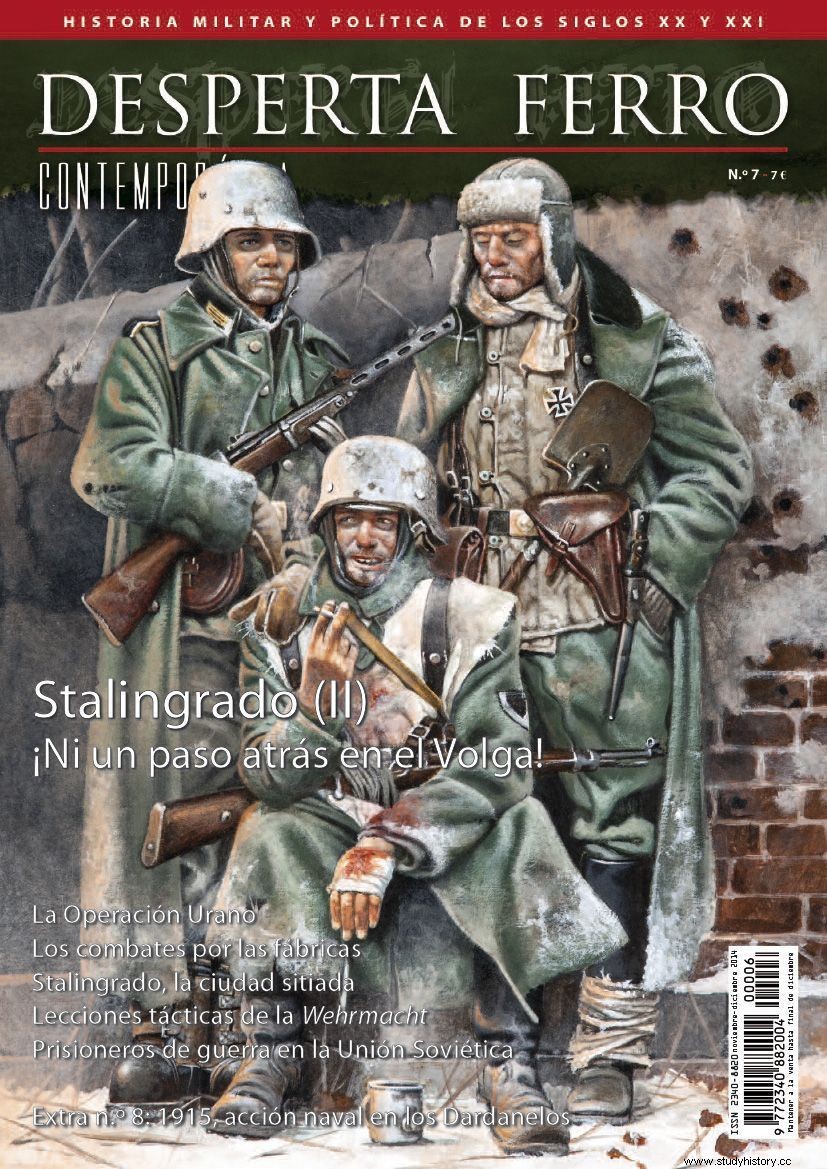
The legendary fight for the Dzerzhinski, Barrikadi and Red October is just the beginning of a story in which the city suddenly becomes the rearguard of a captured Sixth Army after the colossal Soviet maneuver of Operation Uranus. As Von Paulus's army fought, the city was ravaged by cold, disease, battle wear, and hardship. There could only be a reward for the sacrifice of one of the two sides and this would be for Chuikov's men who, by fulfilling their promise in November not to take a step back on the Volga, sentenced their enemy to death. From then until February everything would be agony.
To buyAwake Ferro Contemporary #5:Deutsches Afrika Korp
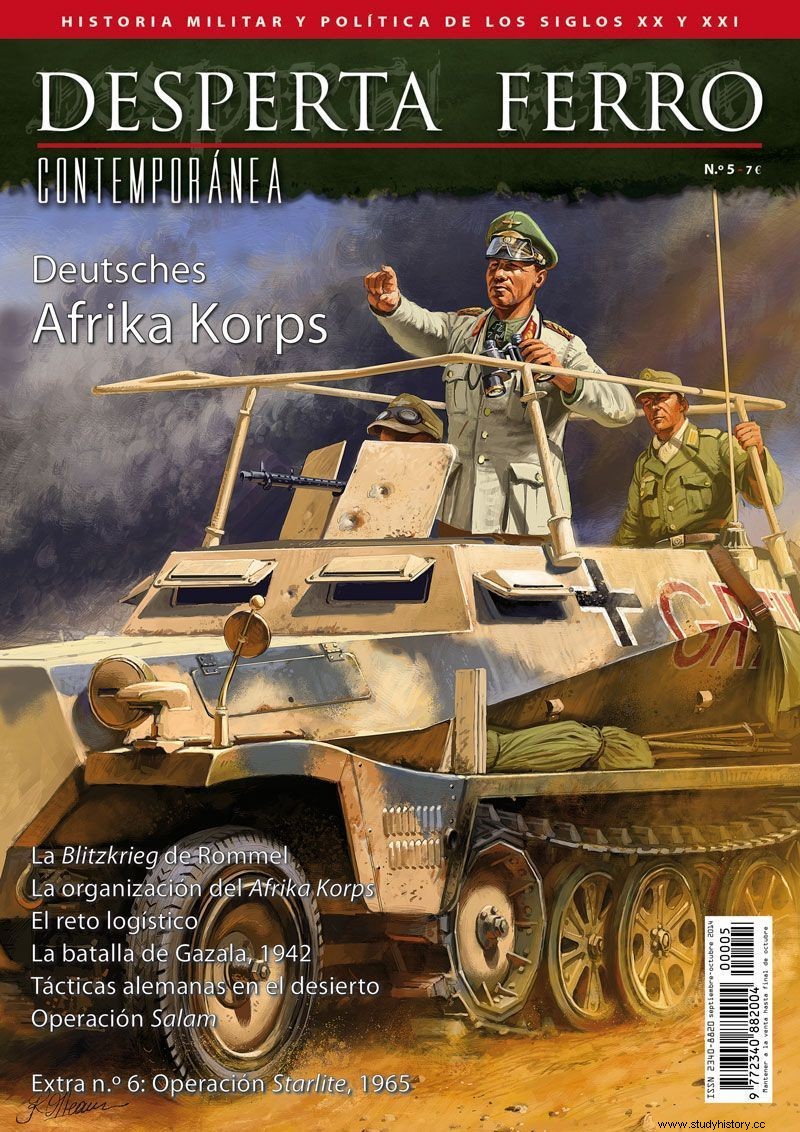
This new issue of Desperta Ferro Contemporánea is not intended to an operational chronicle of the Afrika Korps, but it does immerse the reader inside the German contingent in North Africa to understand its distinctive features, its environment, its difficulties and the logic of these operations. We will also reflect the main criticism:tactical brilliance in the service of a perfectly useless campaign. This number serves to acclimatize the reader to the conditions of the war in North Africa, to whose arenas we will return to break down its main operations and battles.
To buyAwake Ferro Contemporary #2:Stalingrad (I):The Assault of the Wehrmacht
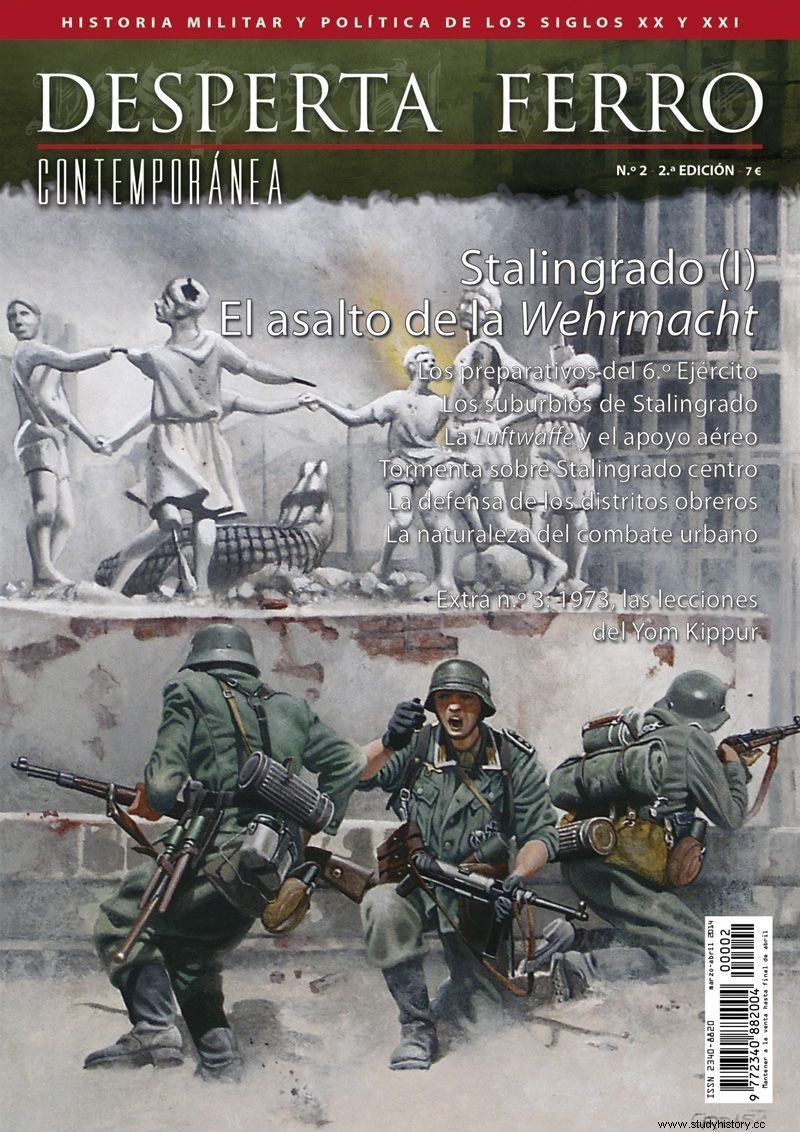
To affirm that Stalingrad is the battle par excellence would be to deny a place of honor to so many others throughout history, but it cannot be overemphasized that this contest "inaugurates" urban combat in a modern sense and does so on an unrepeatable scale. We focus on the first weeks of fighting, between September and mid-October, inside the city. Although this duel on the Volga would ultimately be decided outside the city, without first understanding how the street fighting in Stalingrad turned into an operational and tactical challenge, its outcome cannot be understood:a turning point in the course of the war. World War II.
To buyAwake Ferro Contemporary #12:The Battle of the Atlantic
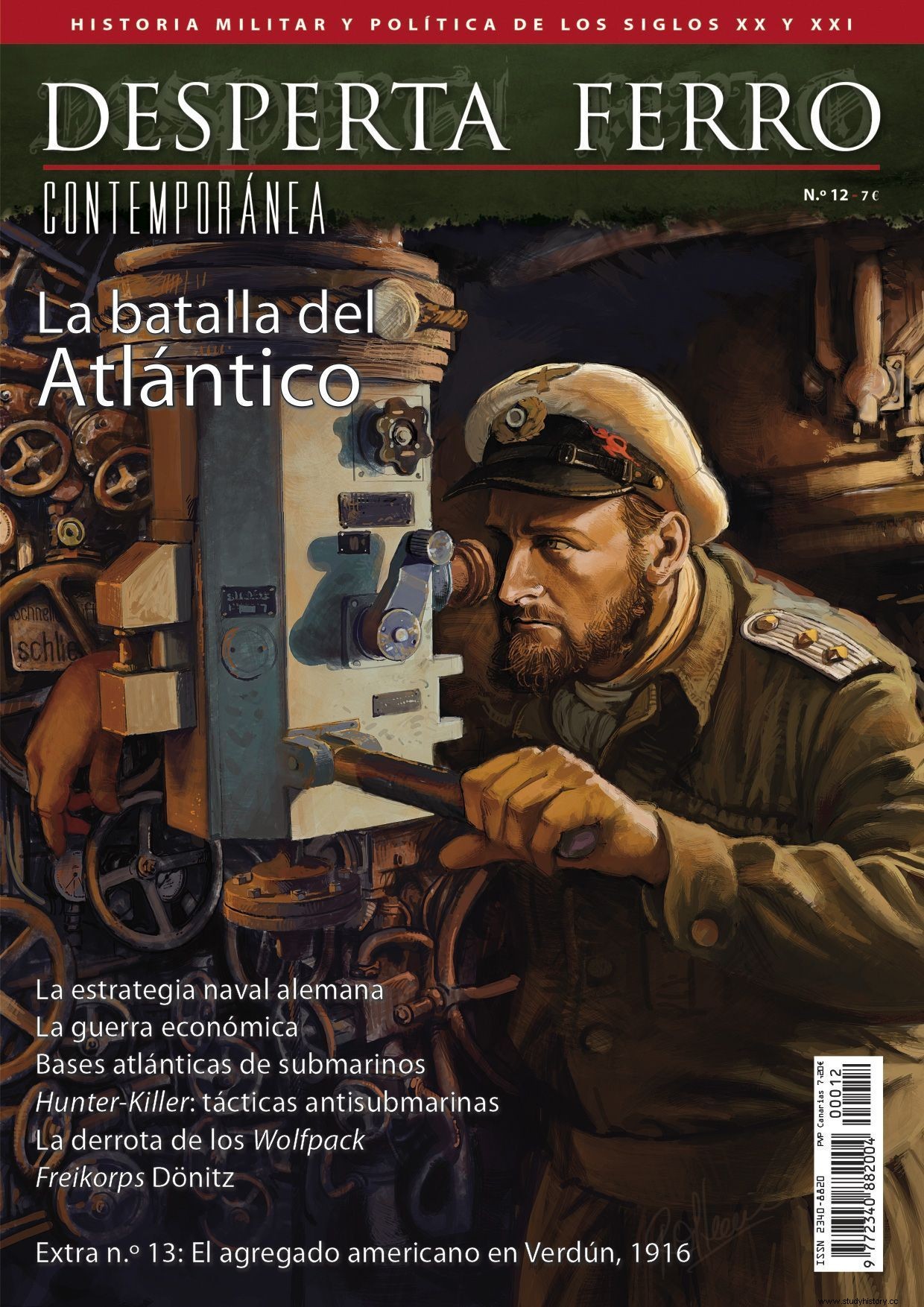
Talking about the Battle of the Atlantic is not just about trying of a protracted naval campaign of epic proportions; it is above all to refer to an entire dimension of the Second World War that transcends the tactical and the operational and whose scope had to do with the very possibility of sustaining the war effort. Within this battle we focus on the fighting in the spring and autumn of 1943, from which time, according to contemporaries and historians, the Battle of the Atlantic was militarily lost for Germany. Despite this, the strategic objectives pursued by the allies would not be achieved until the end of the war.
To buy